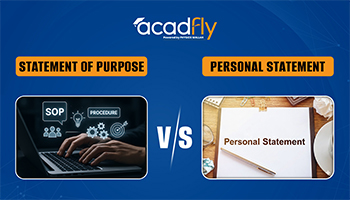
Problem: Denmark is world-renowned for its quality of life, but this comes with a high cost, making financial planning difficult for international students. Solution: This detailed guide provides precise, section-wise expenses in both the local currency (DKK) and Euros (€), with a crucial focus on segmenting costs between the expensive capital, Copenhagen, and the primary student city, Aarhus.
Denmark Living Costs: Quick Monthly Estimate (DKK and EUR)
The cost of living for an international student in Denmark is highly dependent on your city. Copenhagen is typically the most expensive, while Aarhus offers a slightly lower cost base.
|
Expense Category |
Estimate (DKK) |
Estimate (EUR) |
Notes |
|---|---|---|---|
|
Accommodation |
2,500 – 6,000 |
€335 – €805 |
Dormitories or shared apartments are mandatory for budgeting. |
|
Food & Groceries |
1,500 – 2,500 |
€200 – €335 |
Based on cooking at home and shopping at discount stores. |
|
Transportation (Pass) |
300 – 600 |
€40 – €80 |
Monthly public transport pass or a one-time bicycle purchase. |
|
Utilities/Internet |
500 – 1,000 |
€67 – €135 |
Often included in dormitory rent. |
|
Personal/Leisure |
1,000 – 2,000 |
€135 – €270 |
Essential personal care, entertainment, and socializing. |
|
Monthly Total (Approx.) |
5,800 – 12,100 |
€780 – €1,625 |
The average student should budget for DKK 8,000 to 10,000 (€1,075 – €1,345). |
|
Deposit (Upfront) |
6,000 – 18,000 |
€805 – €2,415 |
Expect to pay 1–3 months' rent as a deposit when securing accommodation. |
City-Specific Expenses: Copenhagen vs. Aarhus
While both are major cities, costs in Aarhus are generally 10–15% lower than in Copenhagen, primarily due to cheaper rent outside the city center.
1. Accommodation Costs
Accommodation is the single largest expense, and the choice between a student dormitory (Kollegier) and a private room will dictate your budget.
|
City & Type |
Monthly Rent (DKK) |
Monthly Rent (EUR) |
Notes |
|---|---|---|---|
|
Copenhagen (Shared/Dorm) |
3,500 – 5,500 |
€470 – €740 |
Higher demand and scarcity. |
|
Copenhagen (Private Apt.) |
7,000 – 10,000+ |
€940 – €1,340+ |
Very expensive in central areas. |
|
Aarhus (Shared/Dorm) |
2,800 – 4,500 |
€375 – €605 |
More accessible dormitory options. |
|
Aarhus (Private Apt.) |
5,500 – 8,000+ |
€740 – €1,075+ |
Slightly lower private market rates. |
Tips for Finding Accommodation:
-
Search Early: Begin your search months in advance, as demand is always high, especially in Copenhagen.
-
Utilize University Resources: Check your university's housing office first; they often manage the most affordable dormitories (Kollegier).
-
Online Platforms: Use trusted sites like BoligPortal or Findroommate, and never send money before signing a lease or viewing the property (a key safety tip).
2. Food, Groceries, and Dining
Food expenses are manageable if you adhere to a student budget centered on cooking.
-
Groceries (Monthly): Budget between DKK 1,500 to DKK 2,500 (€200 to €335). To save money, shop exclusively at discount supermarkets like Netto, Rema 1000, and Lidl.
-
Casual Dining: A meal at a modest restaurant or cafe typically costs DKK 100 to DKK 200 (€13 to €27).
-
University Cafeterias: Many university cafeterias offer subsidized student meals, usually costing around DKK 50 to DKK 80 (€7 to €11) per plate.
Tips for Saving on Food:
-
Batch Cooking: Prepare meals for the week to avoid impulsive, expensive purchases on campus.
-
Student Discounts: Always check if local supermarkets offer weekly student deals or sales.
3. Transportation and Cycling Culture
Denmark boasts one of the world's most efficient public transport systems, but the bicycle is the true student standard.
-
Public Transportation (Monthly Pass): Costs range from DKK 300 to DKK 600 (€40 to €80) depending on the zone coverage and city. This is the most cost-effective option for frequent travel.
-
Cycling: Investing in a used bicycle costs between DKK 500 to DKK 1,500 (€67 to €200). This one-time purchase is the cheapest, healthiest, and most Danish way to commute. Essential: Buy a high-quality lock to prevent theft.
4. Utilities, Study Materials, and Insurance
|
Expense Category |
Monthly Cost (DKK) |
Monthly Cost (EUR) |
Notes |
|---|---|---|---|
|
Utilities (Electric, Heat, Water) |
500 – 1,000 |
€67 – €134 |
Often fixed or included in dorm rent. |
|
Internet |
200 – 300 |
€27 – €40 |
Basic package cost. |
|
Textbooks (Per Semester) |
500 – 1,000 |
€67 – €134 |
Crucial: Always check the library first or buy used books to save significantly. |
Health Insurance for International Students
-
EU/EEA/Swiss Students: Generally covered by your national health insurance via the European Health Insurance Card (EHIC).
-
Non-EU/EEA Students: Once registered with the Danish Civil Registration System (CPR), you are typically entitled to the country's free public healthcare. Consult your university to ensure compliance with visa health requirements prior to arrival.
Student Life in Denmark: Positives and Challenges
|
Positives (High Quality of Life) |
Challenges (High Cost of Living) |
|---|---|
|
World-Class Education: Many universities offer high-quality, English-taught programs. |
High Cost of Living: Prices for goods and services are among the highest in Europe. |
|
Student-Friendly Culture: Excellent support systems and a vibrant social atmosphere. |
Housing Shortages: Finding affordable, well-located accommodation is highly competitive. |
|
Efficient Transport: Reliable public transit and an excellent cycling infrastructure. |
Weather: The climate can be cold, wet, and dark, especially during the long winter months. |
Conclusion: Achieving Financial Stability in Denmark
Understanding the cost of living in Denmark, specifically differentiating between Copenhagen and Aarhus, is the foundation of a successful study abroad experience. While the country is expensive, the high quality of education and life generally justifies the expense. By prioritizing dormitories or shared housing, cooking at home, and cycling, you can effectively manage your budget and enjoy your time in this progressive nation.
Important Considerations:
- Tuition Fees: While tuition is free for EU/EEA and Swiss citizens, students from other countries typically need to pay tuition fees. These fees vary depending on the university and program.
- Currency: The currency in Denmark is the Danish Krone (DKK).
- Banking: Opening a bank account in Denmark can be helpful for managing your finances.
Cost of Living in Denmark FAQS
Is Denmark an expensive country to live in?
Can I work while studying in Denmark?
How much money do I need to show for a visa application?
4. Are there student discounts available in Denmark?
What are some tips for saving money in Denmark?
Is it possible to live on a tight budget in Denmark?









